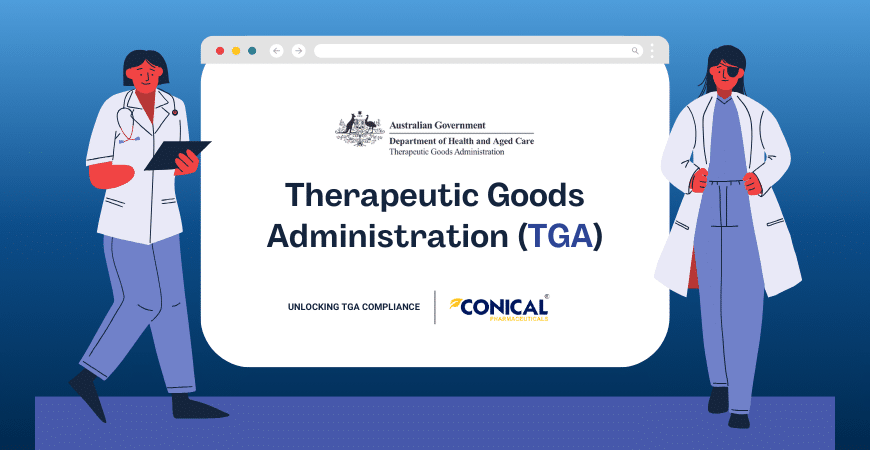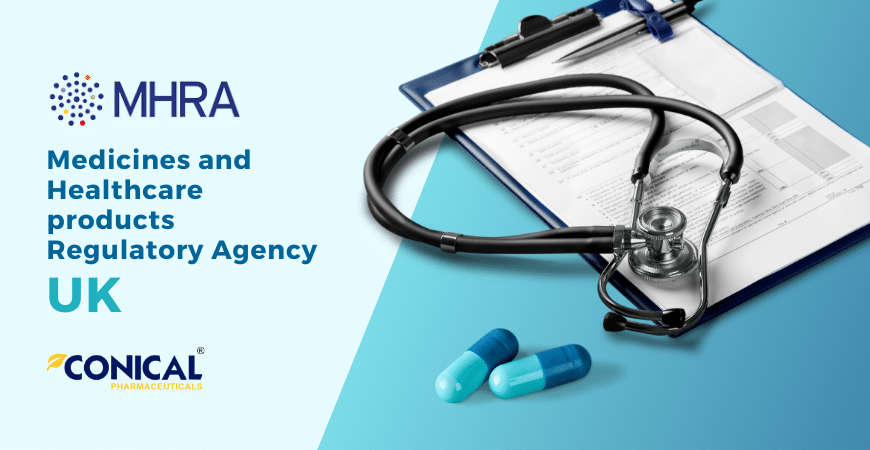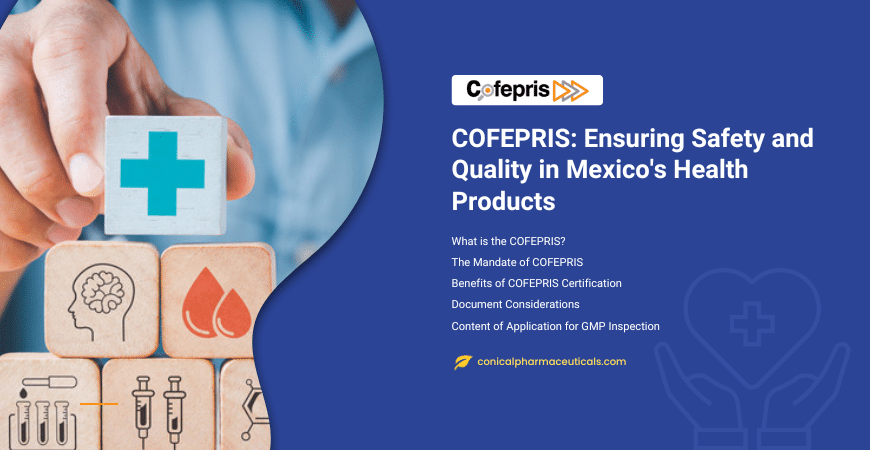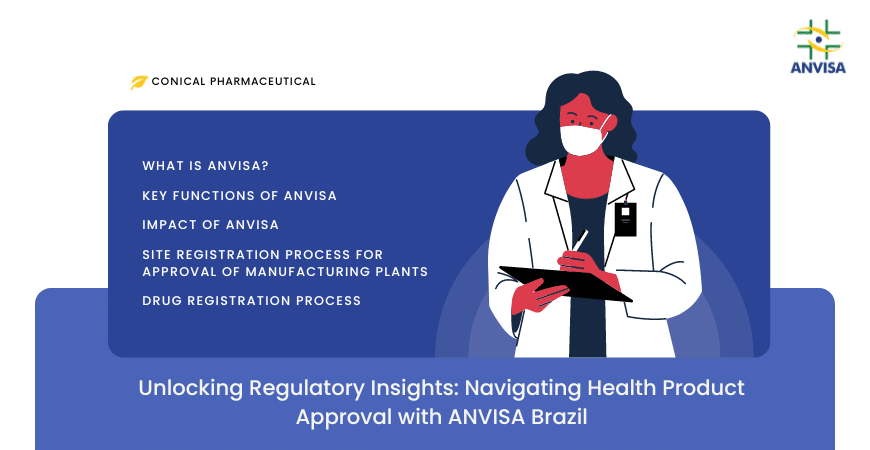Introductory
The Therapeutic Goods Administration (TGA) is the medicine and therapeutic regulatory agency of the Australian Government. As part of the Department of Health and Aged Care, the TGA regulates the quality, supply and advertising of medicines, pathology devices, medical devices, blood products and most other therapeutics. Any items that claim to have a therapeutic effect, are involved in the administration of medication, or are otherwise covered by the Therapeutic Goods Act 1989, the Therapeutic Goods Regulations 1990, or a ministerial order, must be approved by the TGA and registered in the Australian Register of Therapeutic Goods. Understanding the process of drug and site registration with the TGA is essential for manufacturers, exporters, and suppliers looking to enter the Australian market.
Drug Approval Process to be TGA Certified Manufacturer
Australia is one of the emerging markets for pharmaceutical products. For the distribution or marketing of medicinal products or drugs, manufacturers must obtain approval from the Therapeutic Goods Administration (TGA), Australia – a body that regulates drug registration and approval in Australia.
The TGA has unique Regulatory requirements for the registration & product maintenance, compliance and drug approval process in Australia of medicinal products. With the recent mandates pertaining to labeling and submission formats, manufacturers or sponsors are required to be abreast with the latest TGA Regulatory regime and Regulatory Affairs Australia.
Drug Classification in Australia
The Drug approval process in Australia depends on the medicinal product classification. Manufacturers must consider the TGA’s classification of medicines while submitting applications for Australia drug registration and approval.
The TGA has a two-tier system for the regulation of medicines, including complementary medicines:
Tier 1: Classification Based on the Risk Level of the Medicine
- High-risk Medicines
Medicines must be registered on the Australian Register of Therapeutic Goods (ARTG), which requires individual evaluation of the quality, safety, and effectiveness of the product.
- Lower-risk Medicines
Medicines that contain pre-approved, low-risk ingredients make limited claims and can be listed on the ARTG.
Tier 2: Classification Based on the Regulatory Framework
- Registered medicines
- All prescription medicines.
- Most over-the-counter (OTC) medicines.
- Some complementary medicines.
- Listed medicines
- Some over-the-counter (OTC) medicines.
- Most complementary medicines.
Australia’s Regulatory System for Prescription Medicines
It is a legal requirement under the Therapeutic Goods Act 1989, that medical products to be imported into, supplied in, or exported from Australia be included in the Australian Register of Therapeutic Goods (ARTG) which is managed by the Therapeutic Goods Administration (TGA).
Prescription medicines are high-risk medicines that contain ingredients that are described in Schedule 4, Schedule 8 or Schedule 9 of the Standard for the Uniform Scheduling of Medicines and Poisons (SUSMP) and are available by prescription only. This group of medicines also includes some specified products such as sterile injectables.
Manufacturers
The Therapeutic Goods Act 1989 requires that manufacturers of therapeutic goods hold a license to manufacture if they engage in any part of the process of producing the medicine or bringing the medicine to their final state, including engaging in the processing, assembling, packaging, labeling, storage, sterilizing, testing or releasing for sale of the medicine or of any component or ingredient of the medicine as part of that process. To obtain a license, a manufacturer must demonstrate compliance with the Australian Code of Good Manufacturing Practice (GMP) which describes a set of principles and procedures that when followed, help ensure that therapeutic goods are of high quality. GMP includes quality management, manufacturing processes, documentation, and inspection. The TGA has adopted the Pharmaceutical Inspection Convention and Pharmaceutical Inspection Co-operation Scheme (PIC/S) Guide to Good Manufacturing Practice for Medicinal Products, as the Manufacturing Principles that are to be applied in the manufacture of therapeutic goods for Australia.
GMP License or GMP Clearance
To obtain a manufacturing license, manufacturers of medicines must demonstrate compliance with the relevant code of GMP. This is usually, but not always, done through an on-site inspection.
Australian manufacturers must hold a TGA License. Fees apply to obtain and maintain licenses for Australian manufacturers.
Manufacturers outside Australia must have TGA GMP clearance. GMP clearance letters issued by the Office of Manufacturing Quality (OMQ) of the TGA are required for registration of a new medicine in which overseas manufacturing sites are involved.
An overseas GMP Clearance can be granted by the TGA to a sponsor on the basis of GMP Compliance evidenced by any one of the following:
- A GMP Certificate issued by a country with which Australia has a mutual recognition agreement in relation to the relevant overseas manufacturing site.
- A Compliance Verification assessment of a recent GMP inspection report of the relevant overseas manufacturing site prepared by a competent overseas regulatory agency acceptable to the TGA, together with supporting manufacturing documentation supplied by the sponsor or manufacturer.
- A GMP Certificate issued by the TGA following an on-site audit of the relevant overseas manufacturing site.
The TGA fees for GMP clearance vary with the process required to obtain the evidence of GMP compliance. If an on-site inspection is required, the fees will include travel expenses and an hourly rate of at least $1,220 for 4 to 6 days.
The TGA reserves the right to undertake an inspection of an overseas manufacturing site (with associated fees), irrespective of any other evidence supplied.
Overseas GMP Clearances are granted for a specified time period. Sponsors must monitor the expiry date of GMP Clearances for all overseas manufacturers used and submit further applications with either GMP evidence or a request for a TGA on-site inspection of relevant overseas manufacturing sites before the current GMP Clearance expires.
Applications for a TGA licence or TGA GMP clearance are submitted through the electronic business portal (eBS) on the TGA website.
Onsite inspection for Australian manufacturers or overseas manufacturing sites where TGA approved licenses are not available may take up to 12 months. Final approval of the prescription product application cannot be granted until the appropriate GMP evidence documents are submitted.
Sponsors
The sponsor is responsible for applying to the TGA to have their therapeutic good included on the ARTG. To be TGA certified manufacturer, the sponsor must be a resident of Australia or be an incorporated body in Australia and conducting business in Australia where the representative of the company is residing in Australia. The role of the Sponsor in relation to therapeutic goods is defined in the Therapeutic Goods Act 1989 as:
- a person who exports, or arranges the exportation of, the goods from Australia; or
- a person who imports, or arranges the importation of, the goods into Australia; or
- a person who, in Australia, manufactures the goods, or arranges for another person to manufacture the goods, for supply (whether in Australia or elsewhere);
but does not include a person who:
- exports, imports, or manufactures the goods; or
- arranges the exportation, importation, or manufacture of the goods;
- on behalf of another person who, at the time of the exportation, importation, manufacture, or arrangements, is a resident of, or is carrying on business in, Australia.
Once their product is on the ARTG, the sponsor must hold information about ingredients, manufacturing, and health benefits of the product, provide information to the TGA about the product on request, comply with advertising requirements, and notify the TGA of any adverse events or problems with the products. To actively monitor for adverse events, management of appropriate pharmacovigilance activities is required.
How to prepare an application to be TGA Approved Manufacturer
While the GMP approval is progressing for the manufacture of the product, the next steps involve compiling the documentation in a dossier to demonstrate the quality, safety and efficacy of the product, and the printed materials proposed for marketing the product in Australia.
To assist with preparation of a complete application, TGA has published numerous documents and guidelines on the preparation and submission of prescription medicine applications. In general, the TGA adopt European standards (e.g. pharmacopoeia) and guidelines, but may have adaptations on the European guidelines and separate Therapeutic Goods Orders in place to legislate requirements for specific areas and products. Where a relevant guideline is not met, an appropriate justification must be provided in the dossier. If the requirements of a Therapeutic Goods Order cannot be met, the application must include a request for an exemption from the Therapeutic Goods Act 1989 and a justification for the request.
Where documents to be included in the submission are not originally in English, a copy in the original language and a full translation must be lodged.
If a submitted dossier does not meet the regulatory requirements, it will be considered ‘not effective’ and will not be accepted for evaluation.
There are two options available for the registration of new prescription medicines which require evaluation of pre-clinical or bioequivalence data and clinical data:
- Category 1 Applications
- 255 days for evaluation from the date of acceptance
- Require TGA evaluation of all submitted data for clinical, pre-clinical or bioequivalence information.
- Category 2 applications
- 175 days for evaluation from the date of acceptance
- Include submission of two completed evaluation reports from ‘acceptable countries’ where the product has already been approved. The reports must be independent of each other and the product for supply in Australia must be identical to the product for supply in the countries providing the reports where approval has been granted.
The submission dossiers must be prepared in accordance with common technical document (CTD) format and other TGA regulatory requirements.
However, the actual content of the dossier for a TGA submission will vary according to the application category and application type, as shown in the document matrix published by the TGA.
The format and content of Module 1 are specific to each country/regulatory agency. The TGA publish guidance on the format and content of Module 1 for Australia, and when each document needs to be provided. For the eCTD Module 1 organisation and content is different and more aligned with international practice.
The format of Modules 2, 3, 4, and 5 is described in the relevant adopted CTD guidelines, with Module 2 consisting of summaries and critical overview on the technical information in Modules 3, 4 and 5.
For Module 4 and 5, the TGA accepts three types of applications:
- Conventional applications – containing full study reports of company sponsored studies conducted by them (or on their behalf) that demonstrate safety and efficacy claims
- Literature based submissions – relying solely on bibliographic data to support safety and efficacy claims
- Mixed applications – Mixed applications refer to dossiers where Module 4 and/or 5 consists of a combination of complete study reports of limited nonclinical and/or clinical studies carried out by the applicant and supported with bibliographical references. Mixed applications are treated in the same way as literature-based submissions.
The specific content of Modules 2 to 5 will vary according to the application type and is described in the relevant Australian guidelines, adopted EU guidelines and document matrix available from the TGA website. If an application is submitted that does not follow the recommend guidelines, justifications for not meeting a relevant guideline must be provided. The TGA will assess whether the justification provided:
- clearly identifies the guideline or part of the guideline that is not being met
- specifically addresses why the guideline is not being met
- has a contemporary scientific basis
- includes citations to the relevant reference documents, including TGA documents, where appropriate. Applicants must ensure all such references are included in the dossier.
The TGA Registration Process for Drug Product Approval
The TGA offer a pre-submission meeting to discuss scientific or procedural issues before formally initiating the submission process. A guideline describes the management and the timing for these meetings which should be well before submission of the pre-planning form or dossier.
The registration process is designed to take, on average, 330 calendar days (11 months), including the time for applicant activities.
The process involves following steps:
Step 1 – Pre-submission
The pre-submission phase of pharmaceutical regulation in Australia begins with the filing of the Pre-submission Planning Form (PPF). A complete PPF identifies the proposed application type and contains general information about the quality and nonclinical & clinical evidence.
Step 2 – Submission of Pharma Product Registration
The submission phase involves processing activities in preparation for application evaluation. For the TGA, processing activities include:
- Confirmation of dossier delivery by the expected filing date.
- Verification of payment of the application fee.
- Workflow planning and IT administration.
- Consideration of the application against the TGA Regulatory requirements.
- Issuing of a Notification Letter including the notice of evaluation fee payable (if applicable).
Step 3 – First Round Assessment
Data provided in the dossier is evaluated during the first-round assessment phase. If there are certain issues or questions about any components of the application, a ‘’Consolidated section 31 request for information’’ containing requests from all the evaluation areas within the TGA is compiled and sent to the applicant by the date specified in the Planning Letter.
Step 4 – Consolidated Section 31 Request – Response
The applicant should prepare a response and send it to the TGA according to the consolidated section 31 request for information or documents.
Step 5 – Second Round Assessment
During the second-round assessment, the data provided by the applicant in response to the section 31 request is evaluated.
Step 6 – Expert Advisory Review
After completion of the second-round assessment phase, the expert delegates consider the evaluation reports. The delegates may seek independent advice on issues concerning the application.
Step 7 – Decision
The TGA delegates determine whether the application should be approved (possibly modified or varied) or rejected. If any outstanding issues affecting the decision persist, the delegate liaises directly with the applicant during this phase before finalizing the decision on the medicinal products’ registration in Australia.
Step 8 – Post Decision
During the post-decision phase, administrative and Regulatory activities are completed.
Important Validities for the Registration Certificate of TGA
- Validity of Registration Certificate: The certificate of registration is valid for five (05) years.
- Post-approval Changes (Variations): Any changes in the registered medicine should be filed and submitted to the TGA with relevant documents.
How much does it cost to be TGA Approved Manufacturer in India?
The current application and annual fees for registering or listing a medicine on the ARTG are:
| Medicine Type | Application Fee | Evaluation Fee |
|
Prescription (New generic product) |
$20,939 | $83,110 |
Regulation after registration
When you have been successful in obtaining TGA approval for your product based on all the information submitted, there is still more to do. The TGA continue to regulate your product for supply on the Australian market to monitor and evaluate the safety and, in some cases, the efficacy or performance and to manage any risks associated with products.
Once the product is approved for supply, the responsibilities include:
- Implementing post-market surveillance systems and adverse event reporting programs which include if your product is supplied in other countries, informing the TGA of any international concerns related to safety or efficacy.
- Maintaining an approved TGA risk management plan for the product to identify how safety concerns will be identified and mitigated post-registration.
- Updating the information in the TGA submission if there have been any changes to any of the information submitted that may impact safety and efficacy. The TGA publish guidelines on how to manage these changes.
- Ensuring that advertising and labelling is performed in accordance with the Therapeutic Goods Advertising Code.
- Paying annual fees for registering your product for supply in Australia
Conclusion
Certified manufacturers, approved plants, registered sites, and compliant exporters form the backbone of a robust regulatory framework that safeguards public health and promotes confidence in the therapeutic goods market. By adhering to TGA regulations and maintaining high standards of quality and compliance, companies can navigate the registration process successfully and bring their products to market in Australia with confidence.





